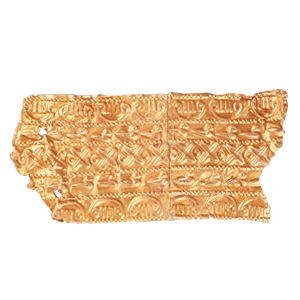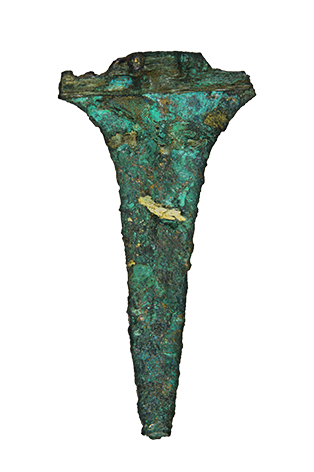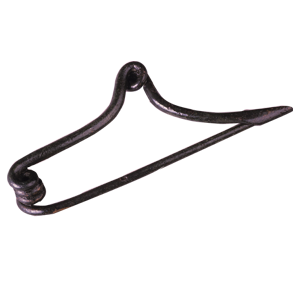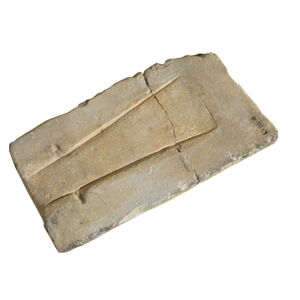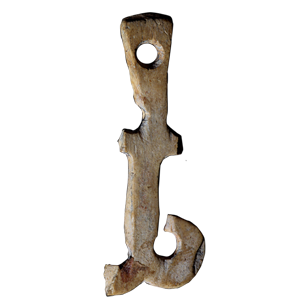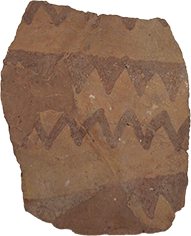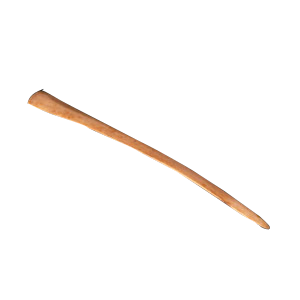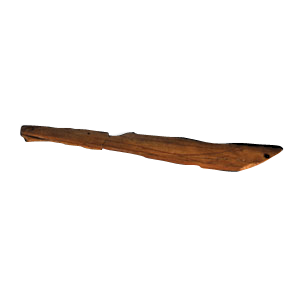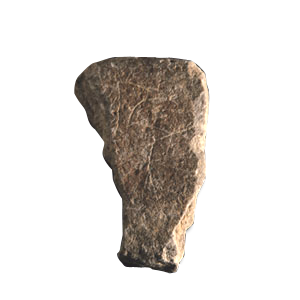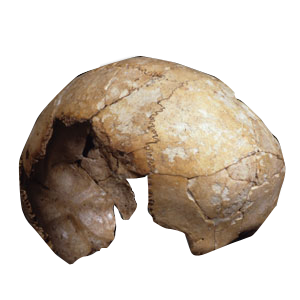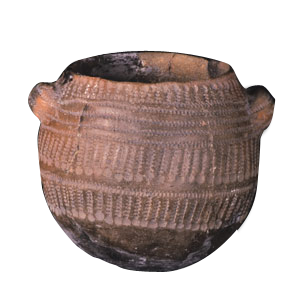
Cardial Glass
Cova de l'Or (Beniarrés) Ceramics h: 10 cm; w: 12'3 cm Neolithic Ancient Neolithic
A small, globular ceramic vessel with impressed cardial decoration. It has two diametrically opposed elements of apprehension next to the rim, consisting of two appendages with vertical holes. The decoration is made up of parallel horizontal lines, obtained by printing the rim of the cardium edule shell, alternating with friezes formed by short vertical lines made in the same way as the previous ones, although finished off in this case by printing the apex of the aforementioned shell.
This type of vessel with cardial decoration represents the first pottery to appear in our lands, associated with the new Neolithic production economy. The cardial decorative technique, loaded with cultural and chronological significance in the Mediterranean context - since it is not exclusive to our sites - becomes one of the defining and most representative elements, together with other material elements, of the archaeological record of the first farmers and stockbreeders who settled in our lands; so much so that in terms of research we speak of the "Horizon of impressed ceramics". The vase we present here comes from the Cova de l'Or, an emblematic Neolithic site on the Mediterranean coast of the Iberian Peninsula, whose cavity witnessed the development of the first agricultural and livestock farming communities in our area, and from which we have good series not only of ceramic materials but also lithic, bone and other materials.
C.S.:1214
SOLER DÍAZ, J.A., 1993.
BERNABEU AUBÁN, J., 1982.
BERNABEU AUBÁN, J. and MARTÍ OLIVER, B., 1992.
MARTÍ OLIVER, B., 1983.
MARTÍ OLIVER, B., 1990.
MARTÍ OLIVER, B. and HERNÁNDEZ PÉREZ, M.S., 1988
MARTÍ OLIVER, B. and JUAN CABANILLES, J., 1987.
MARTÍ OLIVER, B. et alii, 1980.
SALVA, A., 1966.
SEGARRA LLAMAS, J., 1985.
SOLER DÍAZ, J. A., 1997.
Highlights Prehistoric Room
- ................................................. Penya Negra (Crevillent) Gold h: 43,4 mm; w: 21mm Orientalising 7th century BC.
- ................................................. Laderas del Castillo (Callosa de Segura) Furgús Collection Arsenic copper h: 16.6 cm; w: 8.4 cm; h: 0.8 cm Argaric Bronze 2,300 - 1,600 BC.
- ................................................. Mola d'Agres (Agres, Alicante Bronze h: 7,2cm ; w: 2,8 cm ; e: 0.2 cm Final Bronze 800 - 500 b.C.
- ................................................. Penya Negra (Crevillent) Sandstone h: 16'7 cm; w: 8'3cm; d: 4'3 cm Final Bronze 800-550 BC.
- ................................................. Cova de la Barcella, (Torremanzanas)Bone38 x 13 x 3 mmCalcolithicFirst half of the 3rd millennium BC.
- ................................................ Cova de l'Or (Beniarrés) Ceramics h: 10 cm; w: 12'3 cm Neolithic Ancient Neolithic
- ................................................. Cova del Montgó (Xàbia) Ceramics h: 16 cm; w: 14.5 cm; e: 0.7 Neolithic. Ca. 4000 BC
- ................................................. Cova d'en Pardo (Planes) Worked bone h: 23 cm; w: 1.8 cm; d: 0.3 cm Chalcolithic 3,000 - 2,500 BC.
- ................................................. Cova de les Cendres (Moraira, Teulada) Bone h: 11.4 cm; w: 1.13 cm; d: 0.71 cm Upper Palaeolithic Upper Magdalenian Final Upper Magdalenian
- ................................................. Tossal de la Roca (La Vall d'Alcalá, Alicante) Chalky limestone h: 10.5 cm; w: 6.5 cm; d: 3 cm Upper Palaeolithic Late Upper Magdalenian
- ................................................. Beneito Cave (Muro d'Alcoi) Human bones h: 17.6 cm; w: 10 cm; d: 13.5 cm Upper Palaeolithic Solutreogravetian, 17.000 BP

